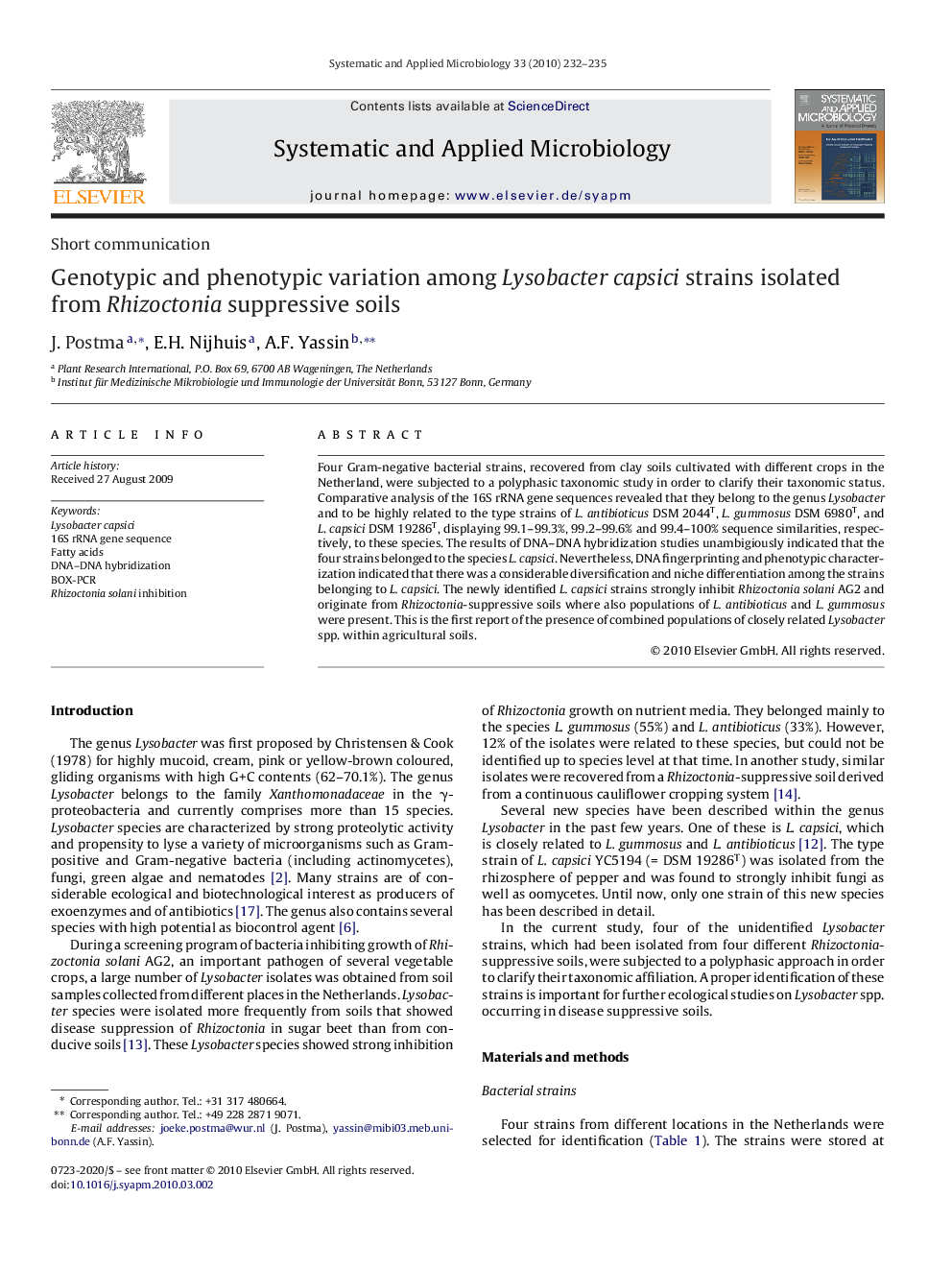| Article ID | Journal | Published Year | Pages | File Type |
|---|---|---|---|---|
| 2063485 | Systematic and Applied Microbiology | 2010 | 4 Pages |
Four Gram-negative bacterial strains, recovered from clay soils cultivated with different crops in the Netherland, were subjected to a polyphasic taxonomic study in order to clarify their taxonomic status. Comparative analysis of the 16S rRNA gene sequences revealed that they belong to the genus Lysobacter and to be highly related to the type strains of L. antibioticus DSM 2044T, L. gummosus DSM 6980T, and L. capsici DSM 19286T, displaying 99.1–99.3%, 99.2–99.6% and 99.4–100% sequence similarities, respectively, to these species. The results of DNA–DNA hybridization studies unambigiously indicated that the four strains belonged to the species L. capsici. Nevertheless, DNA fingerprinting and phenotypic characterization indicated that there was a considerable diversification and niche differentiation among the strains belonging to L. capsici. The newly identified L. capsici strains strongly inhibit Rhizoctonia solani AG2 and originate from Rhizoctonia-suppressive soils where also populations of L. antibioticus and L. gummosus were present. This is the first report of the presence of combined populations of closely related Lysobacter spp. within agricultural soils.
